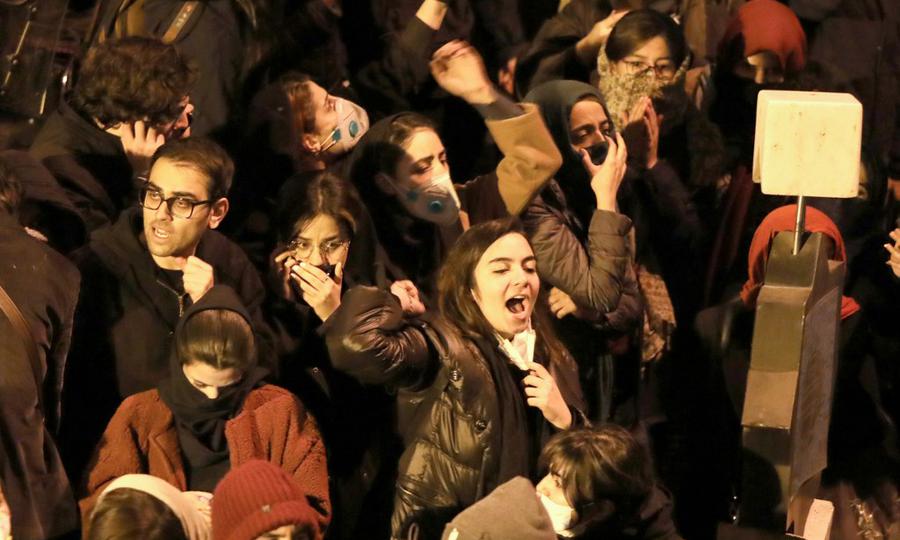Kourosh Ziabari – Asia Times: The fatal downing by Iran of a Ukrainian passenger jet earlier this month touched a nerve across Iran, but few places have felt the collective loss more sharply than Sharif University of Technology – the alma mater of 14 of the victims.
Known as Iran’s MIT, Sharif University of Technology is arguably the top higher education institute in Iran, with an extremely low admission rate. Only some of the best and brightest students manage to be accepted to its programs.
“These young academics were the treasures of their community and country,” said Fatemeh, an undergraduate student at Sharif University who lost an acquaintance and a distant relative on the flight.
“They were not appreciated in their country, even after graduating from such a prominent academic institution as Sharif, and so they underwent all the difficulties of applying and traveling and living abroad, away from their families and friends,” she told Asia Times.
All of that sacrifice, and their fate was to “perish in a moment as a result of a blunder,” lamented Fatemeh. “This is more painful and excruciating than anything else.”
On Tuesday, Iran’s Civil Aviation Organization announced its findings that the military, on high alert after the US assassination of General Qassem Soleimani days earlier, had fired two Russian-made Tor-M1 surface-to-air missiles toward the Ukrainian passenger jet on January 8.
The Sharif alumni who lost their lives in the crash were among an estimated 25% of Iranians with college diplomas living outside the country and who had come home during the Christmas break to reunite with their families.
Iran suffers from one of the highest brain drain rates in the world, according to the IMF, with tens of thousands leaving each year to escape the sanctions-hit economy. Human capital flight is estimated to cost Iran $50 billion annually.
The majority of the victims of the Flight 752 disaster were gifted university students, faculty members, and entrepreneurs belonging to the dynamic Iranian-Canadian community, which numbers more than a quarter of a million people.
Official denial
Iranian authorities initially denied any role in the disaster, which killed all 176 passengers and crew aboard. The official narrative was that a technical failure caused the airplane to catch fire, lose its telecommunication links with the air traffic controllers, and eventually crash.
All of Iran’s major news agencies, newspapers and state TV channels relayed this account, denying other possibilities categorically. This included media organizations run by or affiliated with the Islamic Revolutionary Guard Corps (IRGC).
“The authorities knew that publicizing the true account of the event would have costs for them, and they tried to evade paying that cost by concealing the truth,” said Fatemeh, crediting the involvement of other countries with forcing the admission.
After three days of denial and accusing the US and Western governments of “psychological warfare,” the government admitted the plane was shot down.
The Armed Forces of the Islamic Republic of Iran said in a statement that the civilian airplane was mistaken for a hostile target and blamed “human error” for the fatal mistake.
Protests erupted in cities across Iran following the January 11 admission and Sharif University was no exception.
“On Saturday, there was a great deal of tension and big crowds on the university campus who were chanting angry slogans,” said Elnaz Masoumi, an undergraduate student of computer engineering.
Students were not only angry over the delay in admission – demanding the resignation of the authorities involved – but also frustrated at their own university chancellor, who was on vacation and failed to offer condolences.
University officials, according to Masoumi, provoked further outrage by cancelling a vigil for the victims scheduled for January 6 and warning certain students not to hold any commemoration.
Just days before the crash, one of the victims had presented his research at Sharif University’s annual Winter Seminar Series. Others, she says, were preparing to publish and present years of work.
Knowing this, “multiplied the pain and anguish my friends and I have been feeling after the tragedy,” Masoumi said.
Public gloom
In a rare concerted gesture, Iranian President Hassan Rouhani, Foreign Minister Javad Zarif and the commander of the IRGC Aerospace Force General Amir Ali Hajizadeh each offered statements of regret over the tragedy.
But Iranians on the streets – mostly university students – seemed too irritated to be soothed by the belated apology. They were demanding something bigger, namely the resignation of the country’s top authorities.
They were particularly frustrated since the leaders of other countries, most notably Canadian Prime Minister Justin Trudeau, had issued emotional statements in solidarity with the families of the victims immediately after the crash. For many protesters, the crash was the result of recklessness following the Soleimani assassination.
Trudeau, whose country lost 57 citizens and 29 Iranian-origin permanent residents, most recently pledged $25,000 for each victim’s family to aid in funeral costs and travel expenses and has called on Iran to compensate them.
Masoumi, the Sharif University student, says a public mood of “hopelessness” has set in back in Iran.
“Given the insincerity and dishonesty with which we as a people were dealt with, is there any hope for the future? Were there other issues on which the government authorities lied to us,” she questioned.
Iran’s brain drain seems likely to continue.
Last week, the Canadian province of Ontario announced it was creating 57 new post-secondary scholarships in memory of each of the Canadian crash victims lost.
The $10,000 scholarships, the local premier said, will be distributed “in consultation with the universities and families of the victims.”
This article was originally published on Asia Times.

